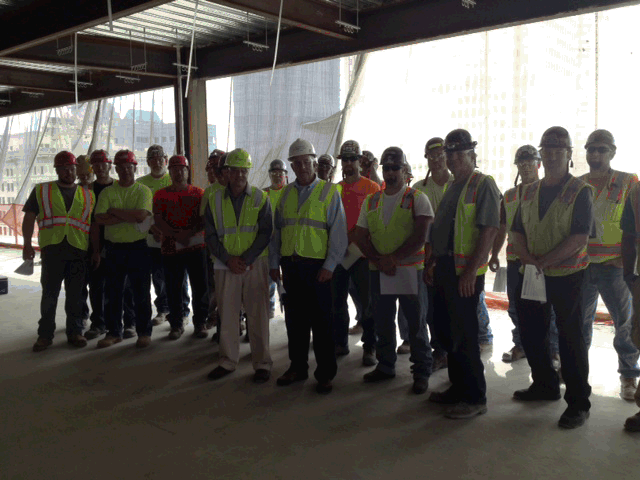THE PROBLEM WITH WORKING AT HEIGHTS
- Written by STACS President, Steve Johnson.
I was just reviewing an article that caught my eye; it was entitled, "The latest Fall Protection Innovation: Jetpacks" From EHS Today - April 1, 2014, by Sandy Smith.
Apparently, a company in New Zealand has developed a practical jetpack for use in "First Responder" situations. The article continued on, by speculating on how the product may lend itself to use while working at heights. No doubt, an interesting and a fun concept with exciting potential.
Although the article was to some degree "tongue-in-cheek," it made me seriously review what's taking place currently with respect to protecting workers while at height.
A good portion of my fall protection training curriculum is devoted to exploring the concepts of Fall Prevention vs. Fall Protection. This means that we don't consider the use of Fall Protection Equipment, until we've exhausted the possibility of engineering the fall hazard out of the task.
Interestingly enough, almost all that attend will agree, that fall prevention is always the better approach.
Ironically, however, once in the field, we as employers tend to provide those working at height with a harness and some type of connecting device rather than exploring Fall Prevention approaches.
I poll my classroom participants and ask why this may be the case. Uncategorically, the response is, "Fall Protection is easier and cheaper."
Allow me to make my case. According to Mr. Thamos Kramer (a partner in the consulting firm, JJB and the President of the International Fall Protection Society) indicates that 1926.500 Subpart M. The OSHA Construction Regulation in the United States, was enacted in 1995.
Just as an aside, I can say from my own experience, that this is one of the leading Fall Protection Regulations that I've encountered.
One would anticipate that with such a detailed and well written standard, that the number of fall related fatalities in construction would have diminished. In other words, we have a template to begin to manage working at heights effectively.
That simply hasn't been the case. Let's Review:
In the period from 2005-2007, The number of fall related fatalities increased by some 28%. During the same time frame, fatalities in all industries, from all causes decreased by 12%.
This is the salient point; Fall Protection Equipment Sales during the same time period (1995-2007) doubled!!!
So, it isn't that employers aren't purchasing the product, it's the fact that the proper selection and instruction on the use of that product is unsatisfactory.
Mr. Kramer continues by outlining that in 80% if fall fatalities, the victim was wearing a harness. It appears to me that fall protection is neither easier nor cheaper than fall prevention in many cases.
In my 36 years of experience, many of those that work at height simply aren't provided the fundamental understanding of the equipment and how it relates to the specifc working at height applications.
In many cases, Fall Protection Training has consisted of something like, "Here's your harness and lanyard, make sure you tie off when working up there. "
THIS SIMPLY ISN’T ACCEPTABLE.
Let's revisit the Jetpack article, maybe we as a community of safety professionals need to do a better job of managing the working at heights problem, rather than looking for the next magical product in order to cure our falling at work ailment.
In short, I'm not convinced that the solution lies in the equipment.
- STACS President, Steve Johnson.













